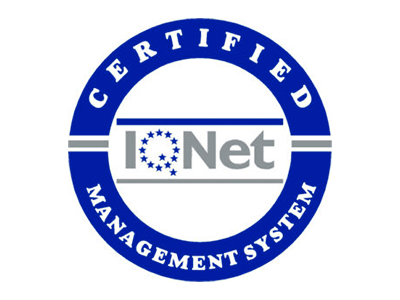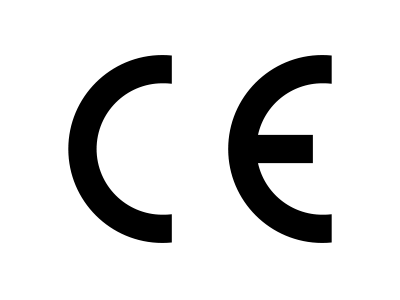The Top 12 Benefits of Using AI for Pharmacovigilance
March 14th 2023

In today’s post, we will discuss the benefits of using AI to improve pharmacovigilance processes and ultimately ensure the safety of patients. Whether you work in the pharmaceutical industry, healthcare sector, or regulatory field, this blog post will introduce you to the benefits of using AI in pharmacovigilance to improve drug safety monitoring. Read on to learn how AI can transform pharmacovigilance and enhance patient outcomes.
Pharmacovigilance is a crucial aspect of the pharmaceutical industry and plays a critical role in ensuring patient safety. But the traditional manual processes involved can be time-consuming and prone to errors. The advent of artificial intelligence has opened up new possibilities for pharmacovigilance, with AI-based solutions offering numerous benefits for drug safety. In this blog post, we’re going to explore the benefits of using AI for pharmacovigilance, including early detection of adverse reactions, improved efficiency and accuracy, real-time monitoring of drug safety, and the development of personalized medicine, among others.
1. Early Detection of Adverse Drug Reactions
The ability of AI algorithms to analyze vast amounts of data has proven to be a game-changer in the field of pharmacovigilance. By analyzing clinical trial data, electronic health records, and even social media, AI can identify potential adverse drug reactions much earlier than traditional methods. This early detection can have significant benefits for patients, as pharmaceutical companies can take corrective action before the adverse effects become more widespread. By identifying these issues early on, companies can prevent further harm to patients, and in some cases, even save lives. Moreover, early detection of adverse drug reactions can help pharmaceutical companies make more informed decisions about drug development, leading to the creation of safer and more effective drugs in the future.
2. Improved Efficiency and Accuracy
The use of AI in pharmacovigilance has the potential to streamline and automate many of the manual processes involved in monitoring drug safety. AI algorithms can analyze and process large volumes of data quickly and accurately, identifying patterns and trends that may be overlooked by human analysts. This increased efficiency not only saves time and resources but also enhances the accuracy of the analysis. The automation of pharmacovigilance processes using AI can free up human analysts to focus on more complex and critical tasks, such as investigating and responding to adverse drug reactions. By reducing the workload on human analysts, AI can also help to minimize the risk of errors due to fatigue or other factors.
3. Real-Time Monitoring of Drug Safety
Pharmacovigilance traditionally involves the monitoring of adverse drug reactions after a drug has been released to the market. However, the use of AI in pharmacovigilance can enable real-time monitoring of drug safety, allowing for more timely responses to potential adverse reactions. This can significantly reduce the time and resources required to identify and respond to adverse events, ultimately benefiting patients and the healthcare industry as a whole.
4. Personalized Medicine
Another promising benefit of AI in pharmacovigilance is its ability to identify patient subpopulations that may be more vulnerable to adverse drug reactions. By tailoring drugs to individual patient needs and characteristics, healthcare professionals can reduce the risk of adverse reactions while optimizing treatment outcomes. This approach not only enhances patient safety but also offers the potential to improve the effectiveness and efficiency of drug therapy.
Also, the identification of patient subpopulations can aid in clinical trial design and drug development, allowing researchers to target specific patient groups and improve the chances of success. This personalized approach to drug development has the potential to transform the healthcare industry, improving patient outcomes and quality of life.
5. Reduced Timeline
The use of AI in pharmacovigilance can significantly accelerate drug development timelines. AI enhances the efficiency of pharmacovigilance and helps researchers make more informed decisions about drug development, reducing the time and resources required for clinical trials and regulatory approval. Ultimately, faster drug development timelines can benefit patients by providing them with access to new and improved treatments sooner.
6. Reduced Costs
In addition to accelerating drug development timelines, the use of AI in pharmacovigilance can also help to reduce costs associated with drug development. By identifying potential safety concerns earlier in the development process, AI can help researchers avoid costly delays and reduce the risk of drug failure. Furthermore, the increased efficiency and accuracy of AI algorithms can help to streamline drug development processes, ultimately reducing the costs associated with clinical trials, regulatory approval, and overall drug development. These cost savings can ultimately translate to more affordable and accessible medications for patients.
7. Improved Patient Outcomes
The ultimate goal of pharmacovigilance is to ensure patient safety and improve patient outcomes. By using AI to identify potential adverse drug reactions early on, pharmaceutical companies can take corrective action quickly, reducing the risk of harm to patients. Additionally, the development of personalized medicine can improve patient outcomes by tailoring treatments to individual patient needs.
8. Regulatory Compliance
Pharmaceutical companies are subject to strict regulations governing the safety of drugs. Failure to comply with these regulations can result in significant financial penalties and damage to a company’s reputation. By providing more comprehensive and accurate safety data, AI can help pharmaceutical companies comply with regulatory requirements, such as reporting adverse events in a timely and accurate manner.
Also, AI can help to ensure compliance with regulations related to patient privacy and data protection. AI algorithms can be designed to comply with industry standards and regulations regarding data privacy and security, helping to safeguard patient information and ensure compliance with applicable laws and regulations.
9. Improved Collaboration
Pharmacovigilance requires collaboration between various stakeholders, including pharmaceutical companies, regulatory bodies, and healthcare professionals. AI can promote collaboration and break down traditional silos in drug development by providing a common platform for data analysis and sharing. It also provides stakeholders with a common understanding of the safety profile of a particular drug. Improving collaboration within pharmacovigilance, it enables faster identification and resolution of safety concerns.
10. Scalability
The integration of AI technology into pharmacovigilance processes can significantly expedite the analysis of vast amounts of data. AI algorithms have the ability to process huge volumes of data with greater speed and accuracy than humans. As the volume of data increases, AI has the ability to continuously learn from new data, improving its performance and increasing the accuracy of its analysis over time.
11. Improving the decision-making process
The use of AI in pharmacovigilance can significantly improve the decision-making process by providing healthcare professionals and regulatory agencies with real-time access to more comprehensive and accurate safety data. AI algorithms can analyze vast amounts of data from multiple sources, identifying potential safety concerns or signals that may require further investigation. By providing a more complete and accurate understanding of the safety profile of a particular drug, AI can help facilitate informed decision-making and improve patient safety.
12. Multiple language translation capabilities
AI-powered tools can enable multiple language translation capabilities, facilitating communication and collaboration among healthcare professionals and regulatory agencies worldwide. By providing real-time translation of safety data, AI can help break down language barriers and improve the efficiency of the drug safety monitoring process.
Conclusion
The use of AI in pharmacovigilance has the potential to revolutionize the way drugs are developed and monitored for safety. AI can enable early detection of adverse drug reactions, improve efficiency and accuracy, facilitate real-time monitoring of drug safety, enable the development of personalized medicine, and help reduce costs while improving compliance and decision-making.
As technology continues to evolve, it is poised to play an increasingly important role in the future of pharmacovigilance. As such, pharmaceutical companies, healthcare providers, and regulatory agencies alike should consider embracing the power of AI in their efforts to ensure the safety and efficacy of drugs and to promote better health outcomes for patients around the world.
Discover how our semantic AI platform and smart data capture and analysis system can strengthen your pharmacovigilance processes, optimize your practices, and empower your decision-making.
Ready to see what we can do for you?
In the right hands, artificial intelligence can take human performance to a hitherto unimaginable level. Are you ready for evolution?




